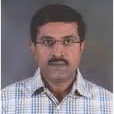
V.Udayashankara
Work place: Department of IT, SJCE, Mysore, India
E-mail: v_udayashankara@yahoo.co.in
Website:
Research Interests: Speech Synthesis, Speech Recognition, Computational Engineering, Computational Science and Engineering
Biography
Udayashankara. V completed his Bachelor of Engineering in Electronics and Communication from Sri Jayachamarajendra College of Engineering, Mysore Karnataka and, obtained his M.E and PhD degree from Indian Institute of Science (IISc) Bangalore. Currently he is a Professor and Head with the department of Instrumentation Technology, at Sri Jayachamarajendra College of Engineering, Mysore, India. His research interests include Rehabilitation Engineering, Digital Signal Processing, Speech recognition, Speech enhancement and EEG analysis. He has authored more than 100 publications in National and International Journals and Conferences in these areas. He has Authored three books, 8051 Microcontroller: Hardware, software and applications, McGraw Hill-2009, Real Time Digital Signal Processing, PHI-2010, Modern Digital Signal Processing, PHI-2012.
Author Articles
Estimation of Noise in Nonstationary Signals Using Derivative of NLMS Algorithm
By Rathnakara.S V.Udayashankara
DOI: https://doi.org/10.5815/ijigsp.2017.08.02, Pub. Date: 8 Aug. 2017
In this paper a new Normalized Least mean square (NLMS) algorithm is proposed by modifying Error-data normalized step-size algorithm (EDNSS). The performance of proposed algorithm is tested for nonstationary signals like speech and Electroencephalogram (EEG). The simulations of above is carried by adding stationary and nonstationary Gaussian noise , with original speech taken from standard IEEE sentence (SP23) of NOIZEUS data base and EEG taken from EEG database (sccn.ucsd.edu). The output of proposed and EDNSS algorithm are measured with excess mean square error (EMSE) in both stationary and non stationary environment. The results can be appreciated that the proposed algorithm gives improved result over EDNSS algorithm and also the speed of convergence is maintained same as other NLMS algorithms.
[...] Read more.A New Research Resource for Optical Recognition of Embossed and Hand-Punched Hindi Devanagari Braille Characters: Bharati Braille Bank
By Shreekanth.T V.Udayashankara
DOI: https://doi.org/10.5815/ijigsp.2015.06.03, Pub. Date: 8 May 2015
To develop a Braille recognition system, it is required to have the stored images of Braille sheets. This paper describes a method and also the challenges of building the corpora for Hindi Devanagari Braille. A few Braille databases and commercial software's are obtainable for English and Arabic Braille languages, but none for Indian Braille which is popularly known as Bharathi Braille. However, the size and scope of the English and Arabic Braille language databases are limited. Researchers frequently develop and self-evaluate their algorithm based on the same private data set and report its behavior using ad-hoc measures of performance. There is no well-defined benchmark database for comparative performance evaluation of results obtained. The developed Braille database, Bharati Braille-Bank, is a large and well characterized information of Braille documents and its related data for use by the research community working in Optical Braille Recognition (OBR) for Bharati Braille. In the present form it includes databases of embossed double sided, embossed single sided, skewed, Hand punched and images with varying resolutions of Hindi Braille. The objective of this work is to stimulate current research and new investigations in the study of Hindi OBR. Without common databases such as those provided by Braille Bank it is impossible to resolve certain contradictory research results. To overcome this problem, Braille Bank provides facilities for the comparative analysis of the data and the evaluation of proposed algorithms with the standard database. In addition, it provides free access to the developed database in the form of Compact Disc-Read Only Memory (CD-ROM). This work is a step forward in the direction of development of standards for Hindi Devanagari Braille data collection for Indian languages. The mission of the resource is to accelerate the development of OBR for Bharati Braille.
[...] Read more.Other Articles
Subscribe to receive issue release notifications and newsletters from MECS Press journals